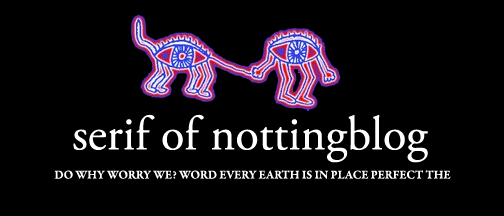"Drunken Must Not Pool Swim"

We're on our way to Japan from Bali.
Should we go to the world's only museum of "Parasitology," a favourite of lovers in Japan who take pictures of themselves in front of the 30ft giant tapeworm model? Or see the model of the Eiffel tower that is bigger than the original?
*
Bali was astounding. We heard the incredible Kecak, or Monkey Trance Chant.
In the darkness (lit only by a huge torch) of an outside temple. A hundred men repeating "chak chak chak" at high speed in different rhythms, imitating monkeys. Hissing. Whoosing. Lying back. Kneeling. Suddenly the rhythms would change. Over top, hoarse chanting and singing. Masked actors appeared from behind large gate/portals enacting a dualistic story from the Ramayana. High energy sound poetry for an hour. Then a guy in a costume which made him look like he was riding a horse, ran repeatedly barefoot through a pile of coconut ashes, splashing (can fire splash?) flames about the courtyard. Do we chant much in the West, anymore? Auctions? Military sound-offs? The world cup? We heard phenomenal Chinese Buddhist chanting in Bangkok by a large group of monk at a temple. Mostly young men, though quite a few young boys (around age 10-14.) One little guy had to be prodded to pay attention. Someone answered their cellphone while sitting crosslegged and chanting from a prayerbook. The chant was fascinating. The blend of high and low voices, the younger monks getting slightly out of phase or pitch or accenting different syllables. There was drumming along with much of it. Every so often a gong would be rung and the chant would change, the monks changing the way that they would face. All this in the middle of the most manic urban scene I've ever encountered. Motorbikes laden with huge piles of boxes making their way through very narrow market alleys filled with food, dollar store type items, and people. Tuk tuks (three wheel passenger motorcycle/autorickshaw type things), cars, and people.
*
We hiked through rural Bali. Rice fields. People waving and calling "hello" from the hillsides. We walked along an irrigation canal between the mountain and the descending terraces of the rice fields. In a hillside glade, we encountered a very old women in a shack/store selling pop, nuts, and arak (alcoholic drink from coconut). She wasn't wearing clothes and so had to quickly put on some. We walked through some villages, one where women were hand weaving baskets out of little reeds. People were remarkably friendly, asking questions (between us and them, we knew three words in common. One of them being "Hello," the others, the names of the town we were heading to, and "Canada.") They were quick to show us things to buy. Strange to be the "other," our pockets full of money. It's tradition to bargain in Bali, but should we care if we bought a basket for $5 or $3? We did want to just give our money to every child we saw. As well as being blissed out by the beauty of where we were, we did constantly wonder what our role was walking through.
Eventually, turning right at the Elementary school (the only western looking building in the village) we headed down a little mountain trail toward Tenganan, an unchanged "Bali Aga," or traditional village. We walked down the mountain for about 45 minutes. We could hear roosters, gamelan music, the wooden cowbells on the oxen.
Everywhere in Bali we saw statutes of gods and spirits. Offerings -- spices, flowers, and incense were placed in front of them and in front of every doorway. Bali is mostly Hindu, however animism plays a big part in the culture. Spirits are everywhere. In this village we walked through temples to ancestors, by a huge Boa tree, streets where there were roosters caged for cock fights, ox, motorcycles, and very beautiful house compounds. There was a pet monkey, a place for the young men's society to gather, a counsel house, the smell of nutmeg, and incense.
Most writing in Bali was in Roman script, but here in Tenganan we saw the elegant curly Balinese script.
Today we saw a Hindu temple in front of a bat cave where over a million bats congregate. The bats (fruit bats) are sacred while they are in the temple, but fair game for farmers to kill when they fly out and eat their fruit. People come from all over Bali to pray at this temple a month after a family member is cremated.
Poorer people have communal cremations (the bodies are first buried and then dug up when enough people are ready to be cremated.) Richer people can afford to schedule their own cremations. We saw a gravesite in the "Monkey Temple" in Ubud-- a place where hundreds of monkeys congregate and are fed by "monkey experts" and tourists.
*
Sign in our hotel pool: "Drunken Must Not Pool Swim."
I wasn't so drunk that I swam in the pool. I swam on land.
*
If you're around, meet me here. Of course, I might to to Odaikba, where on the sixth floor of a building you can rent a dog and go walking along a man-made beach instead.

Comments